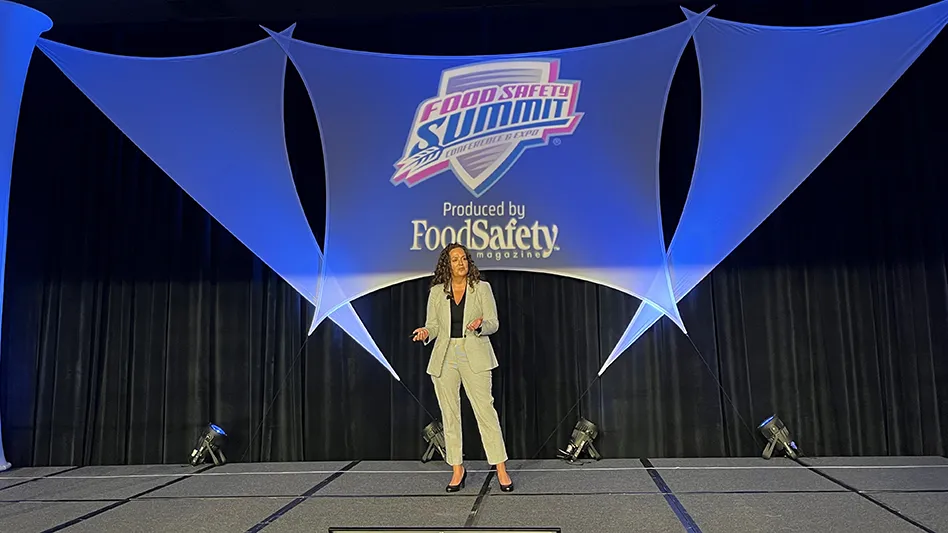
It’s a bird. It’s a plane. It’s a mysterious flying insect!
Ideally, we want to identify any insect that gets into a food facility as the first step. If you look at any Integrated Pest Management (IPM) flowchart, they all start with identification. There are many good reasons why. There is a big difference between an Indian meal moth flying in and a cabbage moth that gains entry. One is going to establish on the foods you have and can create an infestation. The other is accidental and won’t reproduce indoors.

We can tell a lot about a flying insect when it is properly identified. We can tell what foods it is most interested in. Their reproductive potential can give us information on how it may spread. There may be treatments that can be targeted to one pest that may not work well on another. Proper ID can help us find the underlying causes that allowed that insect in and prevent further incursions. It can mean finding the issue early and addressing it, instead of letting it get to infestation levels.
If the pest isn’t identified or isn’t correctly identified, precious time and resources can be wasted. Inspections will not be directed to the right areas, foods can’t be honed in on, traps might be set in completely wrong areas and treatments could be entirely off-target. That’s why identification is typically the first item on any IPM protocol.

Sometimes pests aren’t stuck to a glue board and stationary; they are flying faster than a speeding bullet.
The reality is that when that flying villain gets in, the clock starts ticking. We don’t always have time to wait for a proper ID. Sometimes the pests aren’t stuck to a glue board and stationary; they are flying faster than a speeding bullet. That nice and neat IPM flowchart now becomes a mess of intersecting lines. It can seem impossible.
It’s not. There are things you can do with your pest control team to work through this when you don’t have time to wait for an ID:
- Inspect for where it may have flown in from and all the openings it may have used. It probably didn’t leap over your tall building; it likely came in through a lower opening.
- It doesn’t take X-ray vision to find sanitation issues or conducive conditions that pests may take advantage of. If you can’t address these right away, at least you are aware of them and you can keep closely watching them.
- What’s more powerful than a locomotive? A vacuum. That and other physical controls like traps. You can immediately clean up sanitation issues, suck up any pests you see and set extra traps when you can’t see them.
It’s almost like you have to take a leap of faith first and trust that the ID will come soon. Once it does, your hard work can shift to more focused areas. Sanitation efforts can be redirected to key areas, maintenance teams can be directed to high-risk openings, and traps can be placed in pest pathways. Treatments can be targeted and entire-site shut-downs can be avoided.
You don’t have to be Superman to ID all the insects that may be villainizing your site. There are plenty of good resources to help you. Print and online guides, extension agents, university professors and entomologists exist and are readily accessible. Don’t let waiting on a confirmed ID be your Kryptonite — get started where you can.

Proper ID can help find the underlying causes that allowed a flying insect in and prevent further incursions.
Remember, you can’t protect the world by yourself. This is always a team effort with everyone involved. Everyone can report when they see a pest. Sanitation teams need to know where to go and maintenance teams need to know what to seal. Pest control teams are responsible for inspections as well as treatments. Working together, pest issues can be found sooner, treated more successfully and prevented in the future. Getting everyone involved and helping will solve the flying pest issues faster.
Superman once said, “It’s about what you do. It’s about action.” While waiting on that identification of your flying pest, take other actions. He also said, “There’s always a way. When the odds are impossible, do the impossible.” It’s not impossible, though it can be challenging at times. You can deal with flying pests in your facility.
Bonus Superman quote: “It’s never as bad as it seems.” However, it’s always better to overreact to pest problems than underreact!

Explore the March/April 2024 Issue
Check out more from this issue and find you next story to read.
Latest from Quality Assurance & Food Safety
- FDA Issues Update on Post-Market Assessment of Tara Flour
- ASI Announces Training Partnership with Rootwurks
- Nfinite Nanotech Closes $6.5 Million Seed Financing to Create Flexible Food Packaging with Nanotechnology
- University of Pretoria Food Science Student Wins IFT and PepsiCo’s Academic and Travel Undergraduate Hybrid Scholarship
- Kraft Natural Cheese and Shawn Johnson East Celebrate Launch of Kraft Signature Shreds
- Natural Sourcing International Announces Voluntary Recall of Black Chia Seeds
- PTNPA's DC Fly-In Connects Members with Policymakers
- Breck Partners Acquires NPX One





